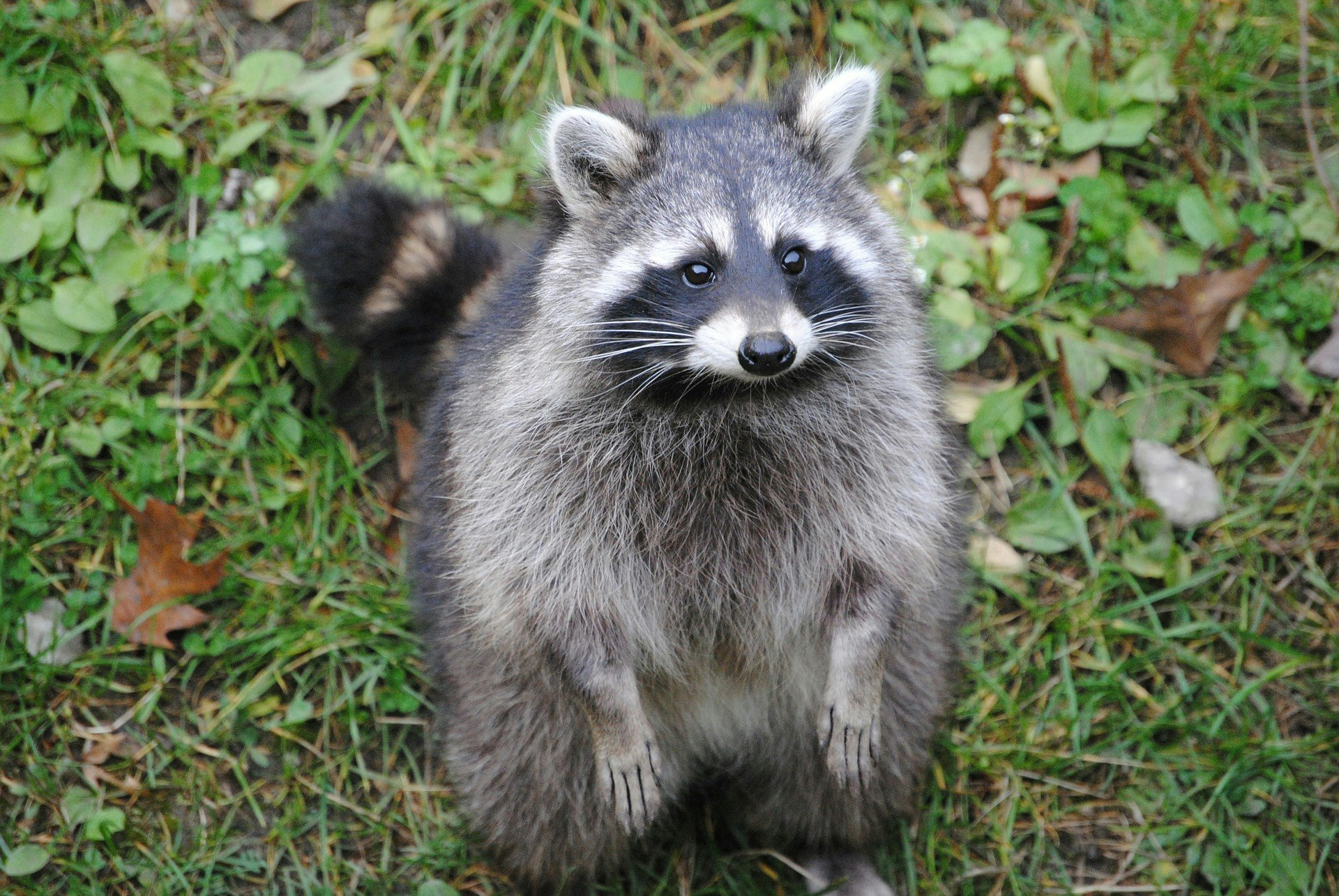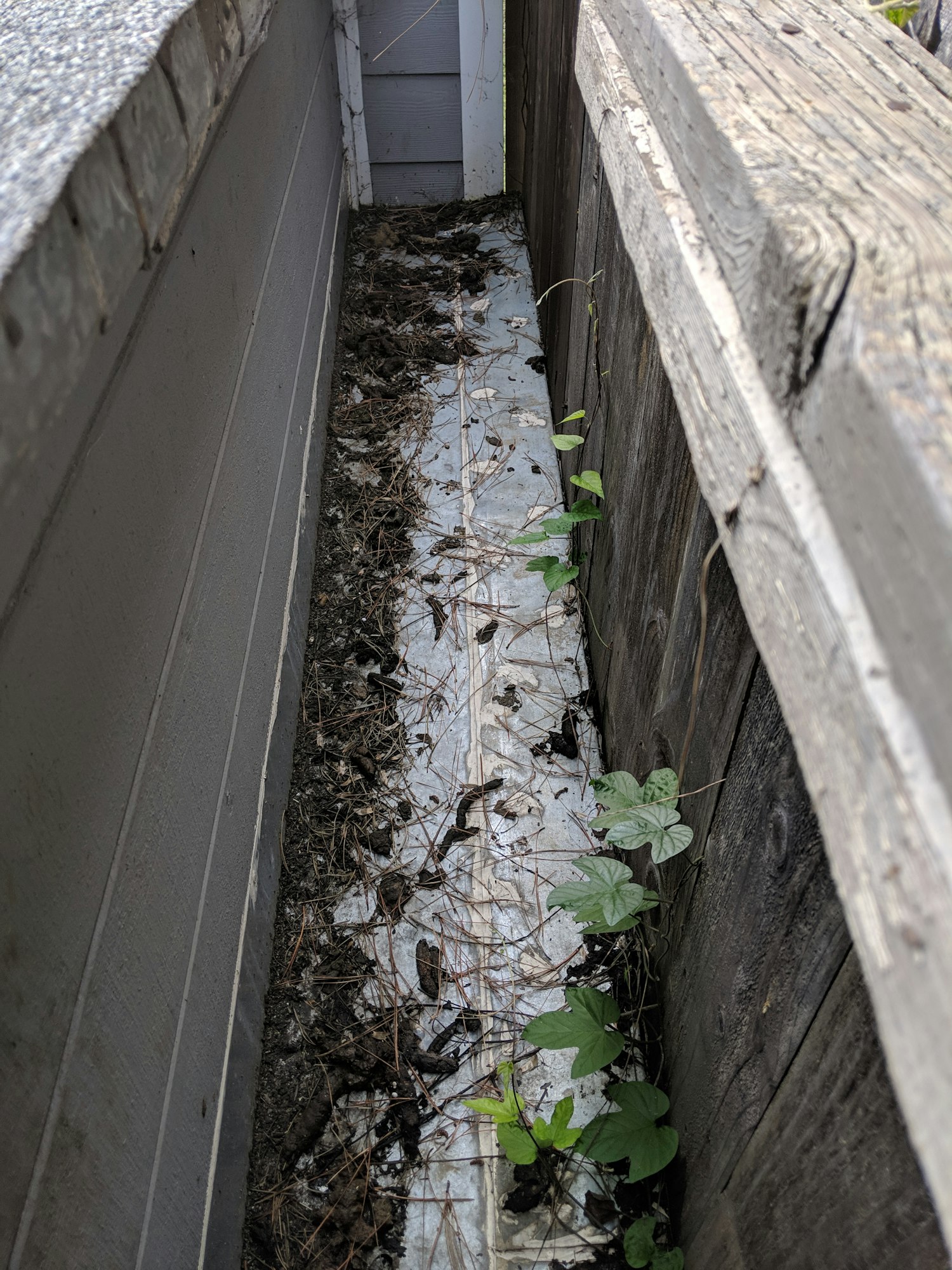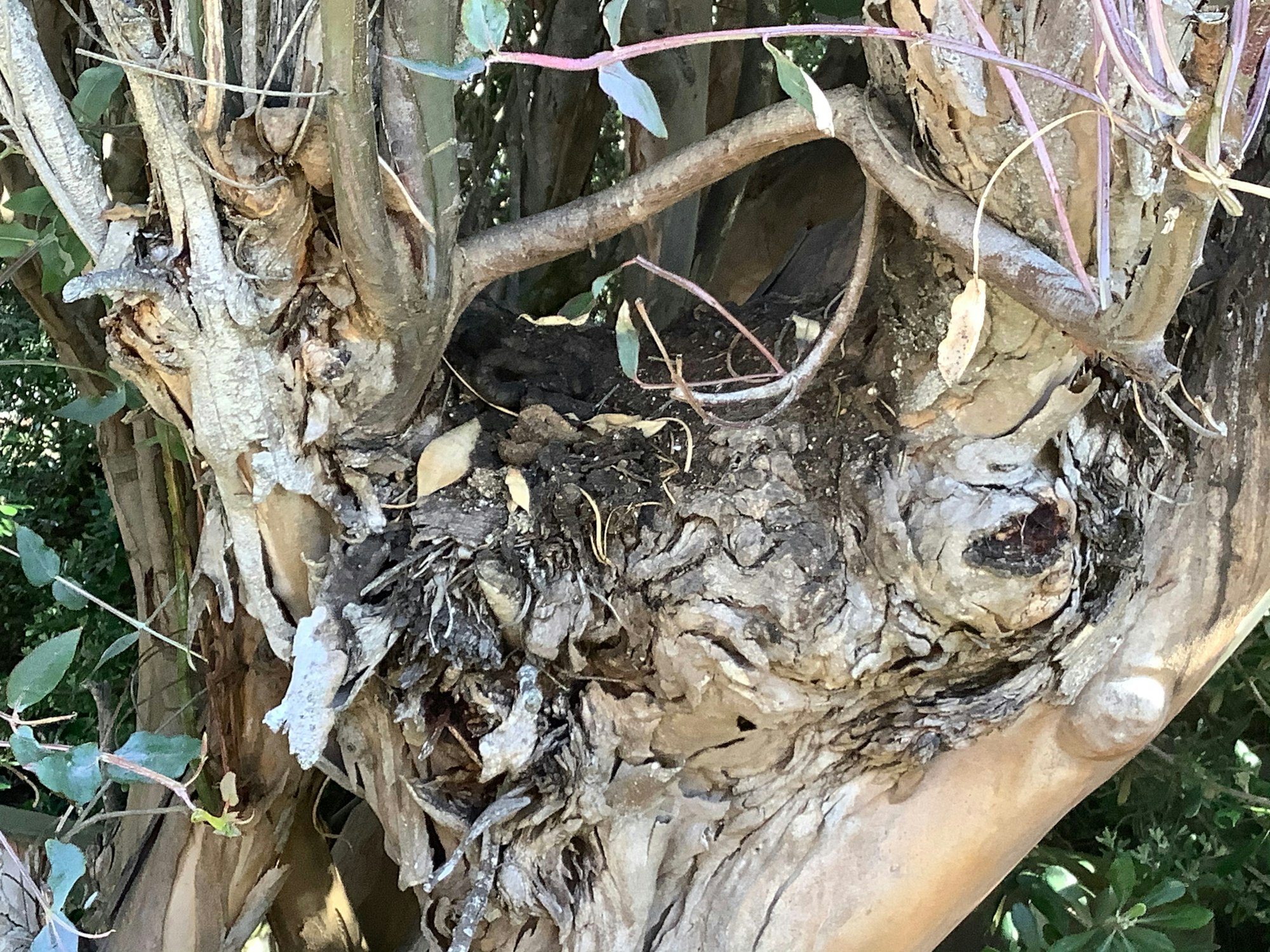Raccoons

Raccoons are nocturnal animals with brown fur, distinctive black mask-like markings on their faces, and ringed tails. They are usually about the size of a cat, but may be larger when well-fed on garbage. If they are used to being fed, raccoons can lose their fear of humans and become aggressive. Since they can carry rabies, it’s important that you never feed or approach a raccoon.
Raccoons live quite comfortably in residential neighborhoods throughout San Mateo County. They have adapted to the loss of their natural habitat by learning how to obtain food and shelter among our homes and businesses. Uncovered garbage cans, pet food left outside, and easy access to the crawl space under homes all provide an open invitation to encourage raccoons.
Raccoons will eat almost anything, but urban and suburban raccoons often feed on garbage and pet food. You can help discourage them from visiting your property by doing the following:
- Do not leave pet food out unattended in your yard
- Keep garbage cans closed with a bungee cord or tie and empty them frequently
- Cut tree limbs back from roof to prevent raccoons from entering the house
- Prevent the accumulation of fruit on trees or on the ground beneath them
- Seal the area under homes and out buildings to prevent raccoons from establishing dens there (if raccoons are already living under your building, contact the District or a private pest control operator for advice)
- Seal off all outside openings to house attics
In addition:
- Do not keep raccoons as pets. Not only are they not suitable for pets because they are wild animals, but they may pose a serious health risk.
- Learn to recognize raccoon latrine areas and either stay away from them or clean them up if necessary. Favorite spots are at the base of trees, in the forks of trees, on fallen logs, large rocks, woodpiles, decks, in attics, garages, chimneys, barns, and outbuildings. In addition, raccoons like to nest in hay lofts and may contaminate hay or straw that is used for bedding or food. Purchase hay or straw from a clean source and dispose of any bales that show evidence of fecal contamination. Do not store the hay you buy in areas that raccoons have access to. Be cautious using and handling fallen timber for firewood.
- Teach children not to put soil or unwashed hands in their mouths
If raccoons have already taken up residence on your property, it may be necessary to seek help from a professional wildlife trapper to remove them. It may also be possible to use noise or other disruptions to encourage animals to leave your property. Once the raccoon has been removed, it is important to seal off all access points to prevent it or other animals from re-entering, and to remove any other attractants that may be drawing wildlife to your property. During spring and summer, raccoons may have offspring in their dens. Before sealing off access to a structure, you should always ensure that all animals have moved on. It may be necessary to give an raccoon several nights to relocate its offspring.
More information on managing raccoons is available from the UC IPM program website.
Raccoon Latrines and Raccoon Roundworm

What is a raccoon latrine?
Raccoons defecate in communal sites, called latrines. Raccoon feces usually are dark and tubular and have a pungent odor. Latrines may be found at or on:
- trees (around the base and at forks)
- raised horizontal surfaces (such as fallen logs, stumps, woodpiles, or large rocks)
- decks or patios
- attics
- garages
Why are raccoon latrines dangerous?
Raccoons are the primary host of Baylisascaris procyonis, a roundworm that can be harmful to people. Roundworm eggs are passed in the feces of infected raccoons, and people become infected by ingesting eggs. Anyone who is exposed to environments where raccoons frequent is potentially at risk. Young children or developmentally disabled persons are at highest risk for infection as they may be more likely to put contaminated fingers, soil, or objects into their mouths. Learn more about raccoon roundworm on the CDPH website or CDC website.

What do I do if I find a raccoon latrine?
If you have found a raccoon latrine in or near your home, cleaning the area may prevent possible infection. Eggs in newly deposited feces are not infectious and take at least 2–4 weeks to become infective. Prompt removal and destruction of raccoon feces will reduce risk for exposure and possible infection.
For more information about how to clean a raccoon latrine, visit the CDC website.
Does raccoon roundworm exist in San Mateo County?
Yes. In 2001, the District conducted a survey of local raccoons in conjunction with the San Mateo County Health Dept, Division of Environmental Health. Fifty-eight raccoons collected by private pest control operators from local residences were examined for worms. Almost three quarters of these (74%) carried raccoon roundworms in their intestines. Raccoons have become extremely common around homes in San Mateo County, even in highly urbanized areas such as Foster City and Redwood Shores, and many of these animals are infected. In 2005, a pet dog in Hillsborough became infected with raccoon roundworm larvae and died from severe nerve and brain damage. Raccoon feces containing roundworm eggs were found in the owner’s back yard. The District does not control raccoons, but has monitored for the presence of raccoon roundworm and regularly educates the public about raccoon roundworm. If you believe you have a raccoon latrine on your property, we can provide an inspection and safe clean-up advice.
Page last reviewed: September 12, 2023
